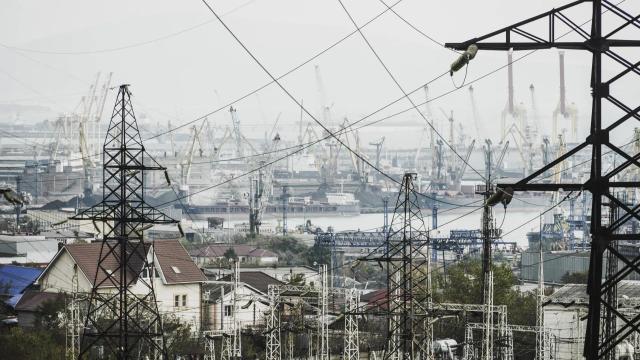Decarbonizing Russia: Leapfrogging from Fossil Fuel to Hydrogen
Following the Deep Decarbonization Pathways Project (DDPP) , researchers from the SDSN Russia network have issued a new paper in which the authors build an ambitious scenario for a radical reduction in carbon emissions and the replacement of Russian fossil fuel exports with hydrogen through the increased use of solar and wind power plants. Excess renewable energy capacity, far exceeding the final demand for electricity, allows for the export of green energy due to the conversion of electricity into hydrogen.
In a world where climate policy increasingly requires the radical reduction of emissions wherever possible, the Russian Presidential Academy of National Economy and Public Administration (RANEPA), the co-host institution of SDSN Russia, explores a different approach to the decarbonization of the Russian economy. According to the analysis of RANEPA, the Russian economy can achieve 100% decarbonization using a wide range of possible combinations of wind and solar power generation, coupled with green hydrogen production.
The authors propose an energy system that can supply solar and wind-generated electricity to fulfill demand and which accounts for intermittency problems, instead of the common approach of planning for expensive carbon capture and storage. Their proposal differs from the common approach of a massive increase in energy efficiency and, therefore, a drastic reduction in energy use per unit of Gross Domestic Product (GDP). Coupled with a massive increase in alternative energy, RANEPA instead proposes using excess electricity to generate green hydrogen. Hydrogen technology can function as storage for future electricity needs or for potential fuel use. Importantly, green hydrogen can potentially be used as a replacement export for Russia’s current fossil fuel exports, while diversifying the economy. The analysis was carried out using the highly detailed modeling framework, the High-Resolution Renewable Energy System for Russia (HIRES-RUS) representative energy system.
This study is building on the work done previously within the Deep Decarbonization Pathways Project. The DDPP report from September 2021 is titled “ Climate Ambition Beyond Emission Numbers: Taking stock of progress by looking inside countries and sectors ”. The report, and its Russia chapter, seek to open the box of emission pathways, by considering the technical, economic, political, social and institutional conditions that will enable the required far-reaching and systemic transformation towards the long-term goal.
The Deep Decarbonization Pathways Project is a collaborative initiative to understand and show how individual countries can transition to a low-carbon economy and how the world can meet the internationally agreed target of limiting the increase in global mean surface temperature to less than 2 degrees Celsius (°C). Achieving the 2°C limit will require that global net emissions of greenhouse gases (GHG) reach zero by the second half of the century. This will require a profound transformation of energy systems by mid-century through steep declines in carbon intensity in all sectors of the economy, a transition we call “deep decarbonization.” Successfully transitioning to a low-carbon economy will require unprecedented global cooperation, including a global cooperative effort to accelerate the development and diffusion of some key low-carbon technologies.
